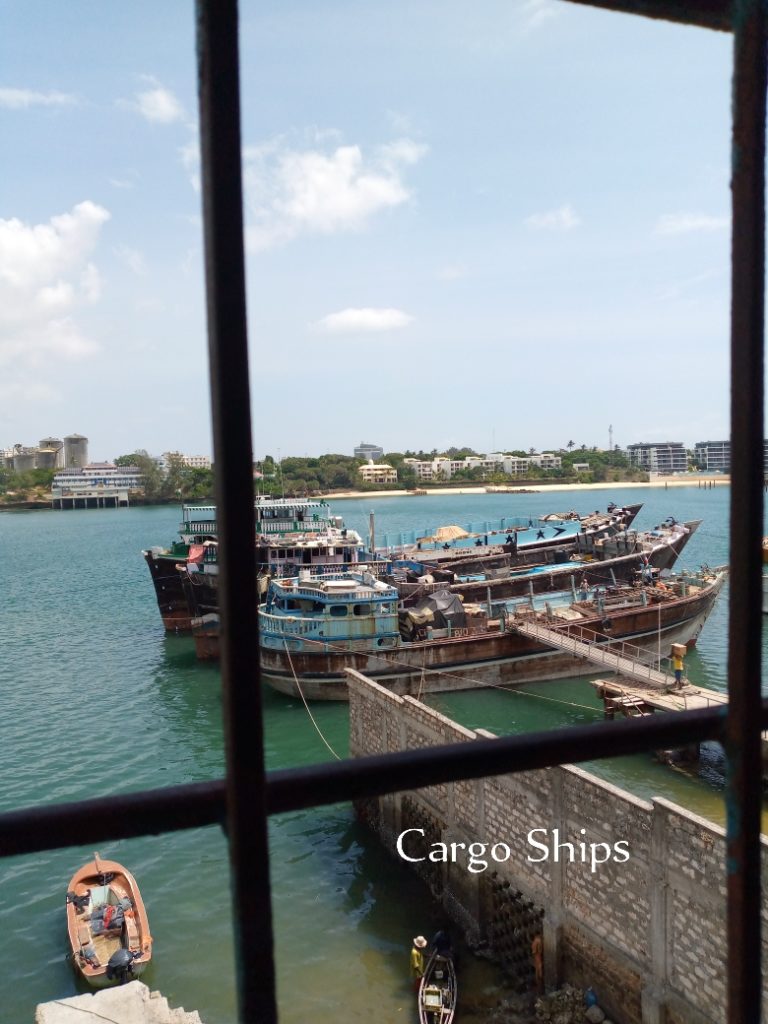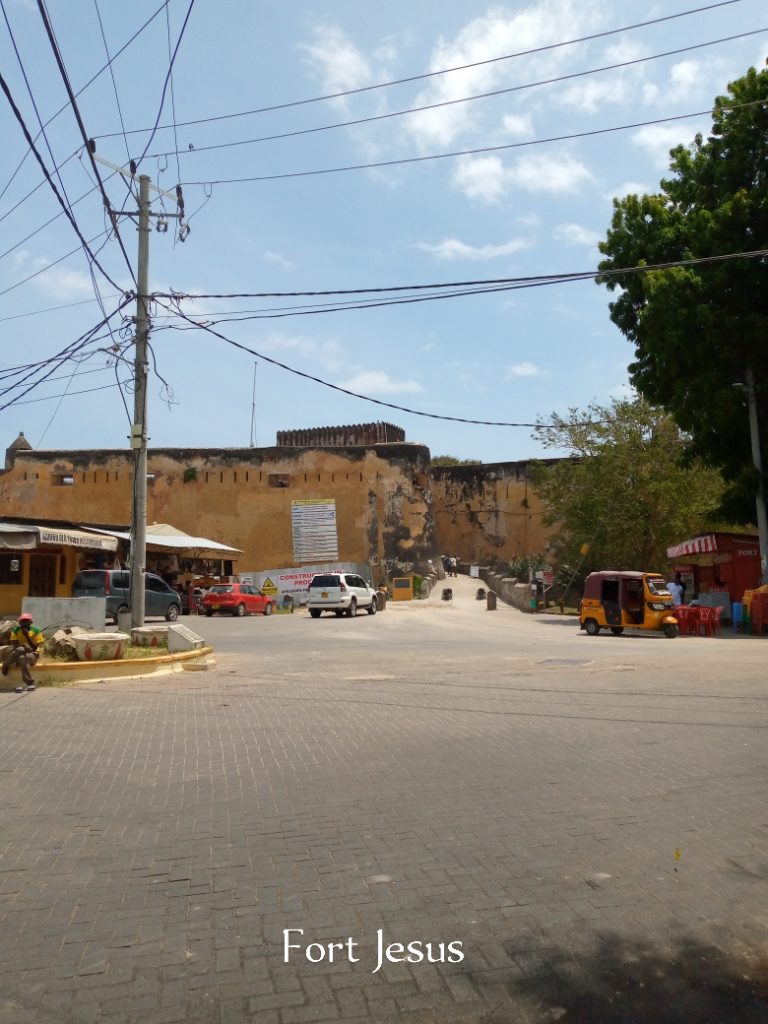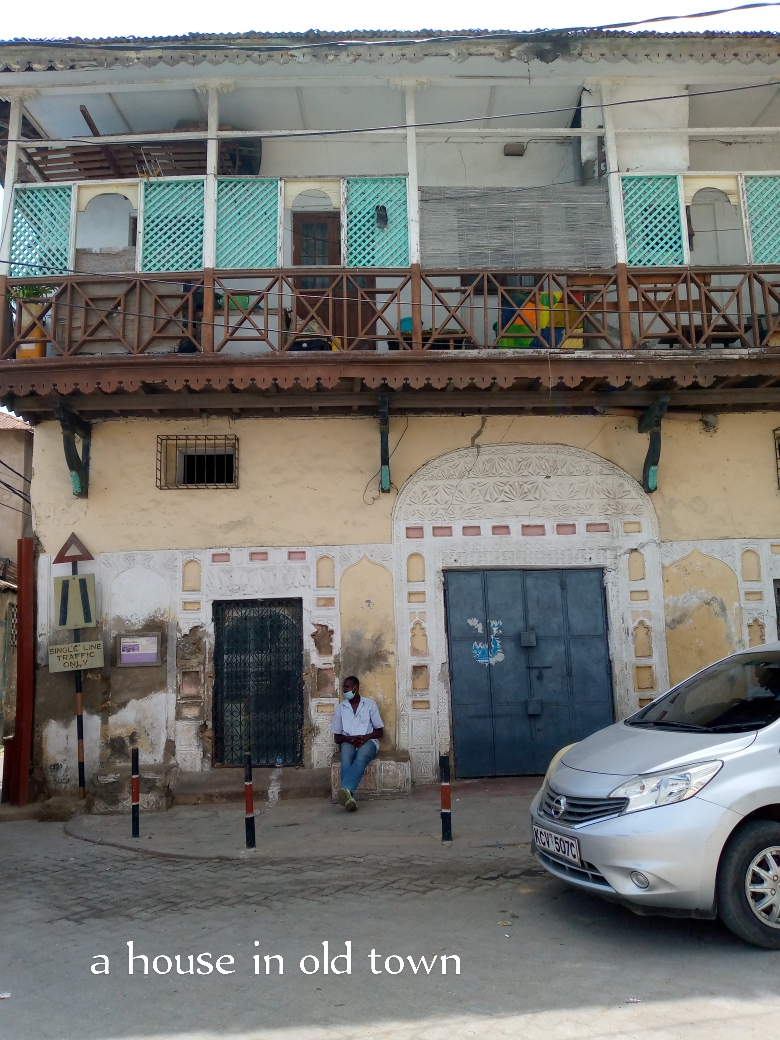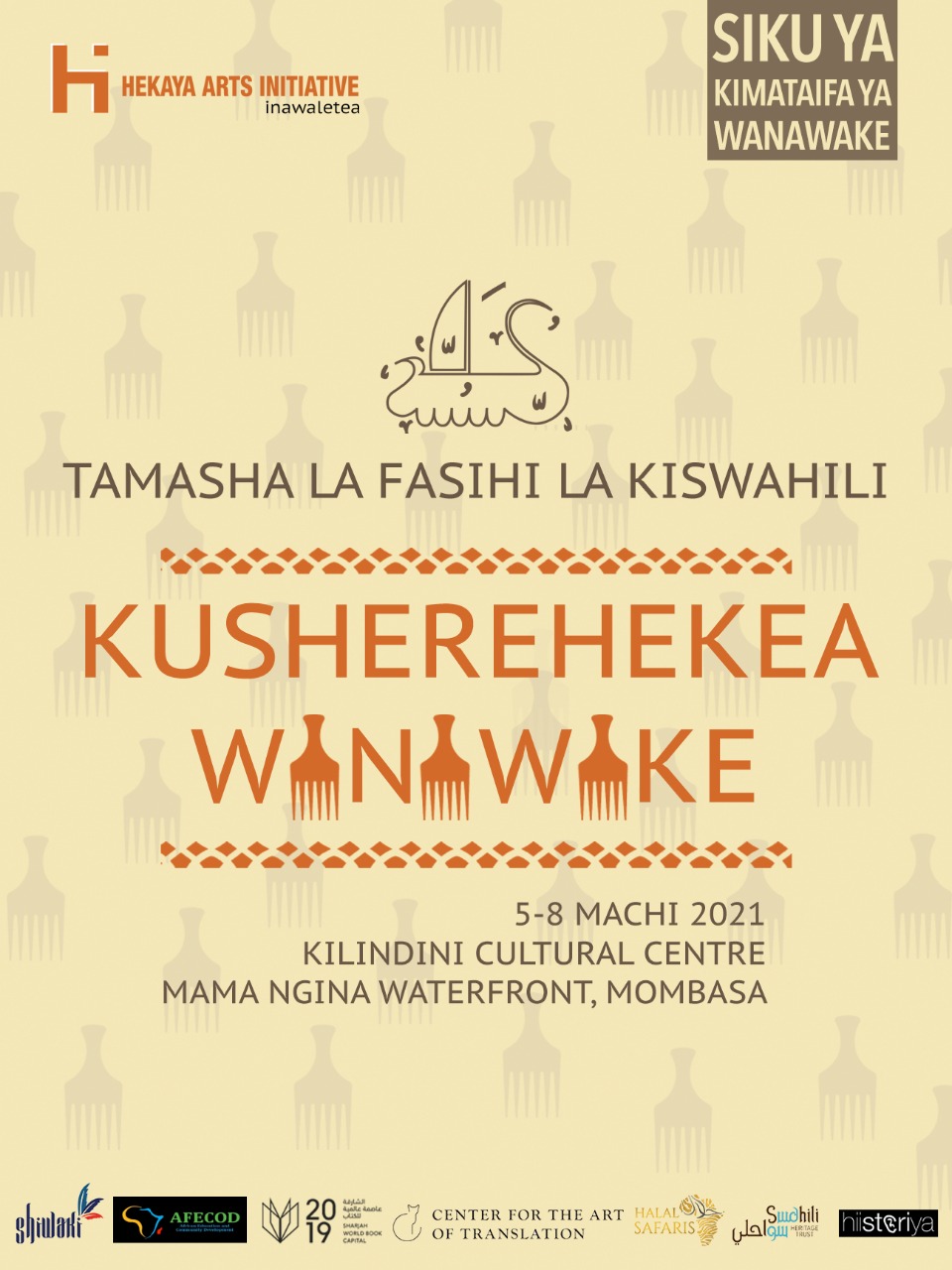by Lorna Likiza
A TOUR OF OLD TOWN MOMBASA
Guide: Najeeb Juma Bhalo
Charges: $20 plus photos by Najeeb, $10 with your own photos

Brief History of Mombasa
Mombasa was originally known by several names in history as highlighted below;
- Gongwa
The name Gongwa referred to a fortified wall whose thickness was about that of outstretched arms. The walls were used to protect the inhabitants from an inland tribe, Warimba, believed to be cannibalistic. At the time, Gongwa was ruled by a female leader known as Mwanamkisi.
- Kongowea
Another name was Kongowea, derived from the word Kongoni, otherwise known as Karibuni in Swahili to mean Welcome.
- Nyali Kuu
This is a name thought to have been influenced by the Swahili word Miale to mean flames. At the time, there was a lot of fighting between the Portuguese and the natives and fire flames were a fixture.
- Mvita
Pronounced Mvitha by the Swahili. This is thought to have originated from Pahali Pa Vita (Place Of War). Vita (War) among the Swahili initially had a singular version Kita and then the plural, Vita.

- Mombasa
The word Mombasa is believed to have originated from either the Arabic Manbasa to mean Baraza (meeting place) or a similar sounding Mijikenda word. This was after 1585. Other reports indicate that it could have originated from the term Mambo Sasa a slogan during the time when the natives were fighting the Portugeuse.

Mombasa initially had 3 native tribes; Wakilindini, Wachangamwe and Watangana all who form the larger Swahili tribe. The Portuguese ruled Mombasa for nearly 200 years before the Arab administration took over. Within the 3 initial Swahili groups, there were other sub groups such as the Wamvita, Wamtwapa, Wagunya among others to make 12 in total, thenashara taifa (12 nations). These groups were headed by a Tamim (Swahili King).
As a result, the Swahili language has 15 dialects dependent on the region a Swahili Speaker is from. The last king of Mombasa was Shehe Mvita. As a result of his consistent resistance of the Portuguese, he was killed and his body buried headless with the head being taken away by the Portuguese in a sign of deep contempt for him.
Old Town Mombasa is believed to have been started by the Arab administration. A recommended book which explores to a large extent the history of Mombasa is Muyaka: 19th Century Swahili Popular Poetry by Mohamed Hassan Abdulaziz. Currently, Old Town Mombasa is mainly occupied by the Bohora of Indian descent and Swahili community.
The locals engage in fishing and business. However, many young men in Old Town engage in drug abuse and crime. And as a result, the women tend to be the ones greatly involved in entrepreneurship.

Spots and Sights of interest in Old Town Mombasa

- Fort Jesus
The area where Fort Jesus stands was originally known as Weni (Short for Jiweni) to mean on/by the stone where the natives used to dry animal skins. The fort is thought to have been built between 1593 and 1596 under orders of King Philip I of Portugal for purposes of guarding the Old Port of Mombasa. Fort Jesus is a listed UNESCO World Heritage Site and is popular with tourists visiting the city. Charges for touring are separate from the guide’s fee.
- Mombasa Club
Mombasa Club was built in 1897 by the British and was initially known as Chini Club. In 1963, the current British monarch, Queen Elizabeth, spent a night there.
- Mandhri Mosque
This is a mosque containing a handwritten Quranic text and Quran

- Fish Market
The fish market overlooks the sea where cargo ships headed to and coming from India bringing in spices among other commodities are docked.

- Swahili Culture and Architecture
The Swahili culture is evident in most of the ancient buildings around Old Town Mombasa serving as residential homes. Swahili doors are common and the intricate henna designs on well manicured female hands a sight to behold. The narrow, quiet cabro streets give a sense of serenity in Old Town.

- Leven House and Stairs
This is a house which bears the name of a British ship which docked at Mombasa in 1824. The ship was engaged in anti-slaving operations and freed slaves were paid for building the tunnel and steps leading down to the jetty in 1825.
- First Post Office in Kenya
- First Police Station in Kenya
- Well and Bath Tub for Slaves

The fresh water well was used by the Chinese in times past to wash slaves in the stone bath tub before being transported to the Arabian peninsula and Europe.
- Africa Hotel
This was built in 1901 and its top floors are currently a high school. Several photos of past guests dot the walls at the lobby area but to walk around, there is a small fee paid at the reception desk.

- Forodhani Restaurant
A present day restaurant but built in the ancient Swahili style.

- Ali’s Curio Market
The building housed a Curio Market and is currently for sale.
- Old Portuguese Church
To a visitor, it may look like any normal ancient building in Old Town but if you look keenly, a crucifix is visible at the top and a plaque detailing its history on one side of its walls.
Activities in Old Town
- Roadside eateries
- Curio Shops
- Paintings for sale
- Madafu for sale

Transportation
To get to Old Town, you can pick a tuk tuk from Posta stage in town for only 50KES. Alternatively, you can opt for a taxi. In addition, Mombasa City has a variety of transportation modes for visitors and regular commuters.

Copyright: Lorna Likiza for heroe book fair 2021


